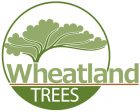FAQ
Frequently Asked Questions
Below you will find answer from our experts in response to common customer questions. If you need further clarification or have other questions, please contact us using the button below or by emailing us at info@wheatlandtrees.ca
Common Questions
What is the best time to plant?
Spring and Fall times are typically the best times to plant; however, you can successfully plant in Summer as well with the correct care.
What are some of the best low maintenance plants?
Bristlecone Pine, Blue Star Juniper, Spring Snow Crabapple and Fireball Burning Bush are all great low maintenance options for a yard.
If my tree/plant is struggling how can I fix it?
If you are having trouble with your plant always feel free to send us photos to info@wheatlandtrees.ca and a description of what issues your plant is experiencing. The most helpful photos show both an overall picture and where the plant is put into the ground with a close-up showing the affected area.
Can we come look at trees in person?
Yes, you can see many of our trees in person at our Glenmore Trail location. At this location, we have a full retail area that customers may walk through. This retail area includes a wide variety of 40-55mm trees, some larger trees, a wide assortment of shrubs and more.
Do you offer pruning services?
Yes, pruning services are offered between the months of October to March. To book your pruning service or to find out more information, please email us at info@wheatlandtrees.ca
Should I clean up the leaves in the fall?
Sometimes it is best to clean up your leaves in the fall and sometimes it is not. If your plants were having issues with bugs in the growing season then yes you do want to clean up your leaves in the fall. This helps prevent the bugs from overwintering and coming back in the next season. If your plants were healthy however; it is best to leave the leaves on the ground so the good bugs can overwinter successfully. Essentially the goal is to keep the good bugs and get rid of the bad.
How do I plant my tree?
Depending on the size of your tree, most often you will be able to plant it with a shovel. A schematic for correct planting of your tree can be found at this link here. For larger trees that are difficult to plant by hand we offer the following services as listed on our Delivery & Planting services page.
How often do I water my tree?
Currently at Wheatland Trees we water our trees on a drip irrigation system. This means that they get just enough water to be healthy. Goods ways to water your tree are with a water bag that slowly releases the water or by checking the soil every few days with your finger. For video instructions on how to check water levels of your tree click here.
Should I fertilize my tree?
Yes, it is a great idea to fertilize your tree; however, keep in mind that when you fertilize your lawn typically you are fertilizing your tree as well. To fertilize correctly it is important to keep the right ratio for the time of year, more information on the nuances of proper fertilization can be found in our Plant Care section.
Should I mulch around my tree?
Mulching is a great way of controlling weeds, improving moisture retention, preventing soil erosion and regulating temperature. A good rule of thumb with your mulch is to spread it around your plant 50-75mm deep and never touch the trunk!
How is a tree measured?
With deciduous trees the size is based upon “caliper”. Caliper refers to the diameter of the trunk and measurement is taken at the ground level, soil line or root flare; whichever is appropriate. Evergreen/conifer trees are measured based upon height.
What is Xeriscaping?
Xeriscaping is system of landscaping with water conservation as the priority.
Do I need to stake my tree?
We generally recommend staking your trees until they are able to establish a strong root structure. Staking your trees is especially applicable to areas such as Southern Alberta where you do get those higher winds.
Why are Chinooks so hard on plants?
Chinook winds are very drying and can draw moisture from the soil and branches which may cause damage. Long warm Chinook periods in early spring can trigger plants to break dormancy. If this break and dormancy is then followed by a cold snap it can result in “winterkill”.
What is the benefit of buying from a local nursery over a box store?
For most box store trees they are cared for in warmer climates where they can grow as quickly as possible. We strongly believe that trees, such as those grown in the local area do much better long term. When you shop at a local nursery, you get plants that are prairie hardy and ready to survive in this area because this is where they have been grown.
What is your warranty?
Currently we do not offer a warranty on any live goods. For most retailers they build the warranty cost into their total product price resulting in a more expensive tree/plant. From this basis, we have decided to forgo the warranty on live goods and offer your quality trees at a more affordable price.
What is our Zone?
Calgary is now considered a Zone 4a area which means on average, the lowest temperature will be -34.4 degrees Celsius; however, it can still get below those temperatures, especially in outlying areas. We want you to achieve the most success with your purchase and so we recommend planting trees/shrubs that are Zone 3b and lower.

